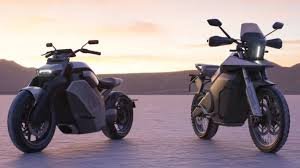In recent years, the way we move around cities has been rapidly changing. One of the most exciting innovations in urban transportation is the electric bike, commonly referred to as an e-bike. With concerns over climate change, rising fuel prices, and traffic congestion, electric bikes offer a sustainable, cost-effective, and efficient solution for commuting and recreation.

What Is an Electric Bike?
An electric bike is a bicycle equipped with an electric motor that assists with pedaling. Unlike a scooter or motorcycle, an e-bike still requires you to pedal—but with much less effort. The motor kicks in when needed, such as when going uphill or riding long distances. Most e-bikes allow you to choose the level of assistance, letting you control how much support you get.
Why Are E-Bikes Gaining Popularity?
Several factors contribute to the growing popularity of electric bikes:
- Eco-Friendly Commuting: E-bikes produce zero emissions and have a much smaller carbon footprint than cars or motorcycles. As cities push for greener transportation options, e-bikes are becoming an ideal choice.
- Cost Savings: Compared to the ongoing expenses of owning a car—insurance, fuel, parking, and maintenance—e-bikes are far more economical. Once you make the initial purchase, the operational costs are minimal.
- Health Benefits: While the electric motor offers assistance, you’re still pedaling, which means you’re getting exercise. For people who want to stay active but may not be able to handle intense cycling, e-bikes offer the perfect middle ground.
- Avoiding Traffic: E-bikes are nimble and can often use bike lanes and trails, allowing you to bypass heavy traffic and reduce your commute time.
- Accessibility: For seniors, people with injuries, or those with physical limitations, e-bikes open up cycling to a broader audience by reducing the strain of pedaling.
Key Features to Look For
When shopping for an electric bike, it’s essential to consider a few key features:
- Battery Life: Look for a battery with a good range that suits your daily commuting needs.
- Motor Power: Higher wattage motors offer more assistance but can drain the battery faster.
- Weight and Design: Lightweight designs are easier to handle and transport.
- Charging Time: Most e-bike batteries take 3–6 hours to fully charge.
- Integrated Technology: Some models come with GPS, smartphone connectivity, or even regenerative braking systems.
Urban Planning and E-Bikes
Cities around the world are starting to adapt to the rise in e-bike use. From expanded bike lanes to e-bike sharing programs, municipalities are investing in infrastructure that supports this growing mode of transport. Governments are even offering subsidies and tax credits to encourage people to switch from gas-powered vehicles to electric alternatives.
The Future of Commuting
The electric bike is not just a trend—it’s a glimpse into the future of transportation. With advancements in battery technology and smart features, e-bikes are becoming more efficient, accessible, and appealing. As we look for sustainable ways to navigate increasingly crowded cities, the electric bike offers a perfect blend of convenience, economy, and environmental responsibility.
Whether you’re commuting to work, exploring a new city, or just cruising around your neighborhood, an electric bike can transform your daily routine and redefine your travel experience.













